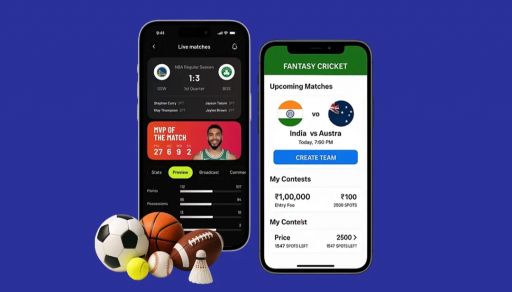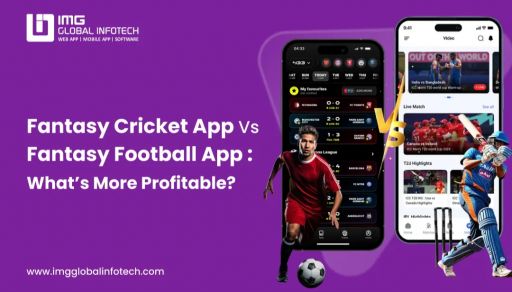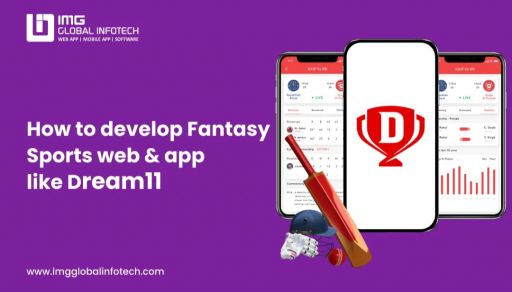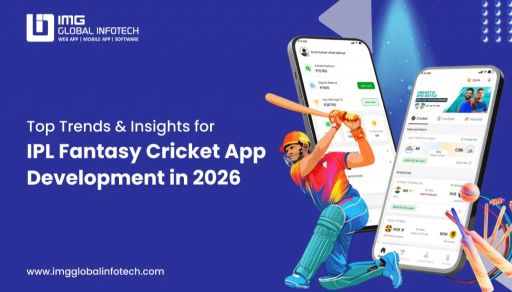Tech Stack & Features To Develop Fantasy Cricket App For T20 World Cup
Lokesh Kumar
Aug 21, 2025

The rise of fantasy sports has transformed the way cricket enthusiasts engage with the game, and nothing amplifies this trend more than the excitement of the T20 World Cup. Millions of fans watch every ball, and the fast-paced nature of the T20 format is ideal for the excitement of fantasy cricket, where the user experience is defined by strategy, analysis, and quick decisions. Because of this, during international competitions like the T20 World Cup, fantasy cricket apps see a sharp increase in downloads, user engagement, and in-app purchases.
The global fan base of cricket, the interactive aspect of building virtual teams, and the chance to win actual prizes while remaining involved in the sport are all reasons for the boom. This makes it impossible for companies and entrepreneurs to pass up the chance to introduce fantasy cricket platforms designed for major events. However, the tech stack that powers the app and the features that improve user engagement are two essential components for success in this fiercely competitive market.
Every technical element contributes to providing a faultless experience, from a strong backend guaranteeing real-time data processing and secure payment gateways to AI-driven analytics, live score APIs, and a smooth user interface. In a similar vein, the app becomes more captivating and addictive with features like player statistics, social sharing, live leaderboards, and multi-contest formats.
This guide will cover the fundamental tech stack and features needed to create a successful fantasy cricket app that takes advantage of the excitement and opportunities surrounding the T20 World Cup.
Why Develop a Fantasy Cricket App for the T20 World Cup?
Cricket is not just a sport in countries like India, Australia, and England— it's a feeling that unites millions of supporters across the globe. With its intense matches, suspenseful finales, and billions of viewers worldwide, the T20 World Cup has emerged as the most exciting event of all time. Due to the enormous fan base, there is an exponential increase in demand for interactive platforms such as fantasy cricket apps during this tournament.
Active fan participation has replaced passive viewing due to the surge in popularity of cricket, particularly in the T20 format. Fans look for ways to participate in the game, not just to support their favorite teams. The ability to build virtual teams, evaluate player performances, and compete with friends and other cricket fans is what fantasy cricket apps offer. Every ball and every run becomes more important when fans receive prizes based on actual match results, increasing the excitement.
Additionally, the popularity of cricket fantasy sports has encouraged followers of other sports, including basketball, kabaddi, and football, to investigate comparable platforms. Global competitions like the T20 World Cup serve as a catalyst for the fantasy gaming revolution, which is led by cricket, the most popular sport in places like South Asia.
The perfect time for a fantasy cricket app development for the T20 World Cup is right now for entrepreneurs and businesses. Massive user acquisition, revenue generation, and brand visibility are guaranteed by the convergence of growing smartphone usage, large audience interest, and the expanding trend of online sports engagement.
Core Features of a Fantasy Cricket App for T20 World Cup
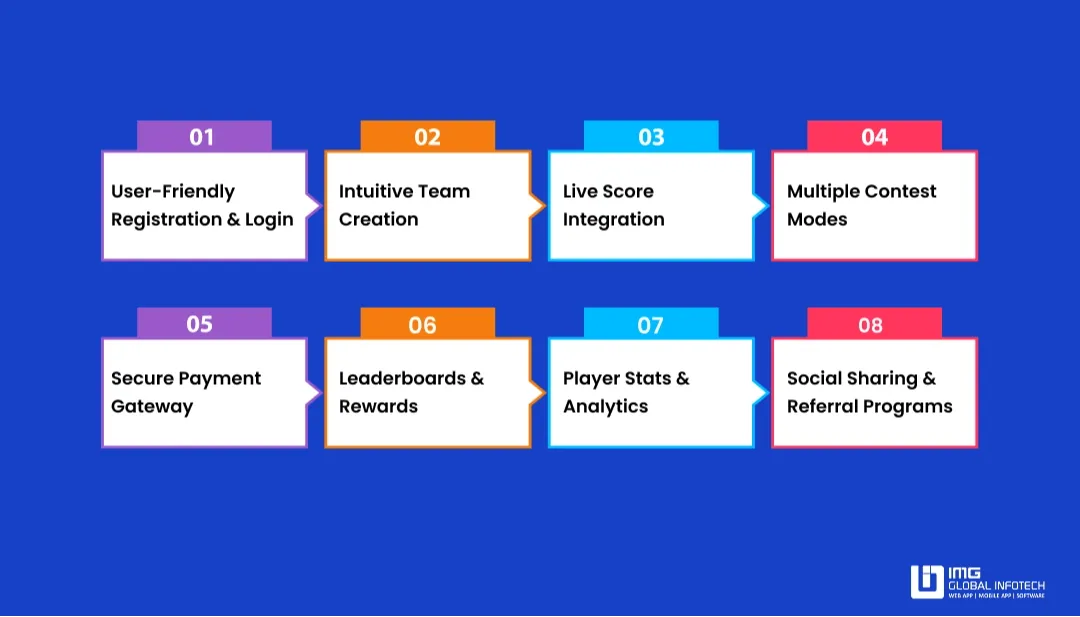
The T20 World Cup attracts millions of cricket fans worldwide, and to capture their attention, a fantasy cricket app must be more than just functional—it should be immersive, engaging, and user-centric. Let’s explore the core features that make a fantasy cricket app successful during the T20 season:
1. User-Friendly Registration & Login
First impressions matter. A fantasy cricket app should offer quick and hassle-free registration options such as mobile number verification, email sign-up, and one-tap social logins (Google, Facebook, Apple ID). Smooth onboarding eliminates barriers for new users, while strong security measures like OTP verification or two-factor authentication build trust. During the T20 World Cup, when thousands of users sign up daily, simplicity in this step ensures higher conversions.
2. Intuitive Team Creation
The heart of any fantasy cricket app lies in team building. Users should be able to select players within a fixed budget, balancing star cricketers with emerging talents. A clean interface with drag-and-drop options, player availability updates, and credit distribution guides makes this process enjoyable. Advanced features like player comparison and suggestion tools can further enhance decision-making. Since T20 matches are fast-paced, team creation should also allow last-minute edits before the toss, keeping in line with the latest trends and insights for IPL fantasy sports.
3. Live Score Integration
Real-time updates are non-negotiable. Integrating live match scores, player stats, and performance points keeps users glued to the app throughout the game. For example, when a user’s chosen batsman hits a six or a bowler takes a wicket, instant updates and visual animations heighten excitement. This feature replicates the stadium-like thrill on mobile screens, ensuring fans stay engaged until the last ball of the match.
4. Multiple Contest Modes
Different users prefer different gameplay styles. Offering multiple contest formats—free practice games, private leagues with friends, or high-stake paid contests—ensures inclusivity. For instance, beginners can start with free contests to learn the ropes, while seasoned players can join mega contests with larger prize pools. Special T20 World Cup-themed tournaments can also attract more users and keep them invested throughout the series.
5. Secure Payment Gateway
With paid contests being a major revenue source, smooth and secure transactions are vital. Integrating multiple payment options like UPI, debit/credit cards, net banking, and digital wallets caters to diverse users. Instant deposits and faster withdrawals build user confidence. During the World Cup, when user activity spikes, a robust payment system prevents transaction delays and enhances overall satisfaction.
6. Leaderboards & Rewards
Competition drives excitement. A dynamic leaderboard that updates in real-time showcases how users rank compared to others. Reward distribution, whether cash prizes, bonus points, or vouchers, should be transparent and instant. Recognizing top players with badges or trophies motivates users to play more matches, increasing retention throughout the tournament.
7. Player Stats & Analytics
Data-driven decision-making is key to fantasy cricket. Users love to analyze player form, past performances, strike rates, and head-to-head stats before making their picks. Integrating historical data, predictive analysis, and injury updates provides deeper insights. For example, if a bowler has consistently performed well at a particular venue, highlighting that information can help users build stronger teams. This boosts engagement and adds credibility to the app.
8. Social Sharing & Referral Programs
Fantasy cricket thrives on community engagement. Features that allow users to create private leagues with friends, share scores on social media, and brag about wins make the experience more enjoyable. Referral programs offering rewards for inviting new users amplify organic growth, especially during the T20 World Cup when fans love involving their peers in the excitement.
By combining these core features with a robust tech stack, fantasy cricket apps can deliver an unmatched user experience. During the T20 World Cup, where engagement is at its peak, these features ensure users not only join but also stay active throughout the tournament.
Tech Stack to Develop Fantasy Cricket App for T20 World Cup
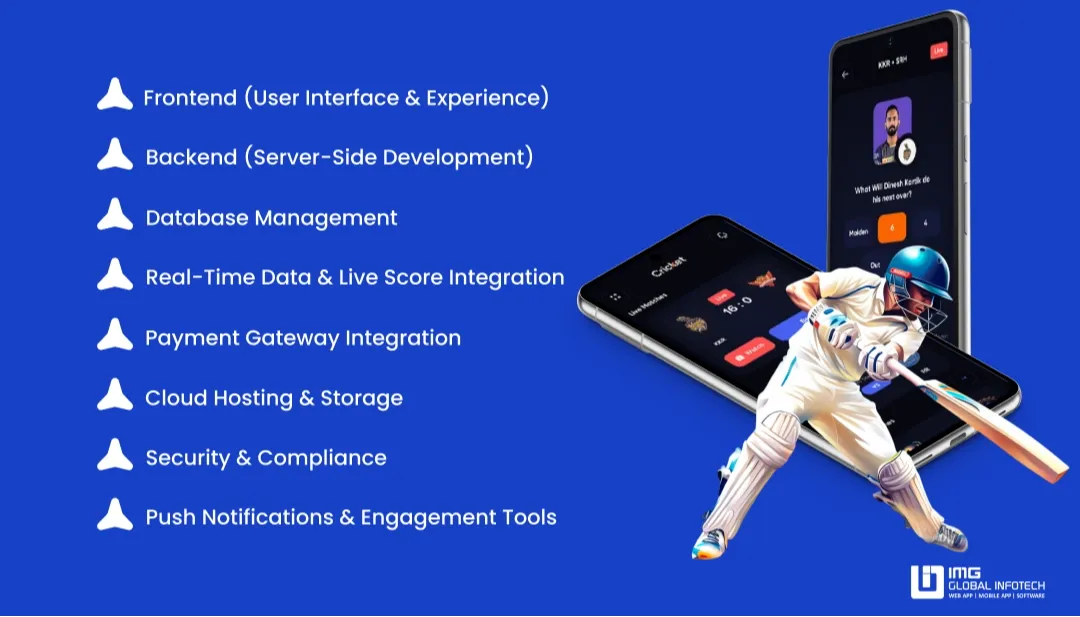
A strong and dependable tech stack is necessary for building a fantasy cricket app that can support millions of users during the T20 World Cup. Top-notch security, real-time updates, and seamless performance are guaranteed by the proper frontend, backend, database, APIs, and cloud infrastructure combination. The suggested tech stack for creating a scalable and feature-rich fantasy cricket app is as follows:
1. Frontend (User Interface & Experience)
The frontend is what users interact with, so it must be responsive, visually appealing, and intuitive.
-
Technologies: React Native, Flutter, or Swift/Kotlin (for native apps).
-
Why: React Native and Flutter allow cross-platform development, reducing time and cost while ensuring smooth performance across Android and iOS.
2. Backend (Server-Side Development)
The backend powers all operations—data processing, authentication, payments, and contests.
-
Technologies: Node.js, Python (Django/Flask), or Java (Spring Boot).
-
Why: Node.js is preferred for handling multiple real-time requests, while Python and Java offer robust scalability for large tournaments like the T20 World Cup.
3. Database Management
Storing user profiles, transactions, player stats, and match data requires a secure and high-performance database.
-
Technologies: PostgreSQL, MongoDB, or MySQL.
-
Why: PostgreSQL and MongoDB handle structured and unstructured data efficiently, making them suitable for high-traffic fantasy sports platforms.
4. Real-Time Data & Live Score Integration
Integrating real-time data and live scores ensures a fantasy cricket app in real time delivers instant updates to users. This feature enhances engagement by allowing players to make timely decisions and enjoy a seamless gaming experience.
-
Technologies: Third-party APIs like SportRadar, CricAPI, or RapidAPI.
-
Why: These APIs provide real-time scores, player stats, and match updates, ensuring users remain engaged during every ball of the T20 World Cup.
5. Payment Gateway Integration
Smooth deposits and withdrawals are essential for user trust.
-
Technologies: Razorpay, Paytm, Stripe, PayPal.
-
Why: They provide secure, fast, and multi-currency payment support, which is crucial during global tournaments.
6. Cloud Hosting & Storage
To handle massive user traffic during peak matches, cloud infrastructure is a must.
-
Technologies: AWS, Google Cloud, or Microsoft Azure.
-
Why: These platforms ensure scalability, load balancing, and data security for uninterrupted user experience.
7. Security & Compliance
User data protection and secure transactions are non-negotiable.
-
Technologies: SSL encryption, JWT authentication, Firewalls.
-
Why: These prevent fraud, data breaches, and unauthorized access, keeping the platform safe during high-transaction periods.
8. Push Notifications & Engagement Tools
Engaging users with reminders and updates enhances retention.
-
Technologies: Firebase Cloud Messaging (FCM), OneSignal.
-
Why: Push notifications can remind users about match deadlines, contest results, and bonus offers.
A well-structured tech stack ensures that the fantasy cricket app not only functions seamlessly during the T20 World Cup but also scales effortlessly as user engagement soars.
Cost of Developing a Fantasy Cricket App for T20 World Cup
Monetization Models for T20 Fantasy Cricket Apps
Businesses have a fantastic opportunity to make a substantial amount of money with fantasy cricket apps during the T20 World Cup. Adopting the appropriate monetization models guarantees profitability and long-term growth, especially with millions of fans actively participating.
Entry fees for paid contests are the most popular model; users pay a nominal fee to join leagues, and the winners split the prize money. As the number of contests and participants rises during large tournaments, this system scales quickly.
In-app sponsorships and ads are another reliable source of income. App owners can earn a consistent income by targeting cricket fans with banner ads, video ads, and sponsored competitions.
Freemium business models are also effective; users can participate in free competitions but are urged to upgrade to premium features like in-depth analysis, professional forecasts, or invitation-only competitions by making micropurchases or subscriptions.
Furthermore, when combined with affiliate networks or payment wallets, referral programs not only aid in the natural growth of users but also open the door to revenue.
Future Trends in Fantasy Cricket Apps
Recent years have seen a meteoric rise in the popularity of fantasy cricket apps, and the T20 World Cup has only fueled this rise. Since cricket is one of the most popular sports in the world, particularly in nations like India, Australia, and England, fans are growing tired of merely watching games. They want to feel involved in the game, compete, and take part. Future developments in fantasy cricket apps are being influenced by this change in fan behavior.
The combination of data analytics and artificial intelligence is one of the most promising trends. In order to create successful teams, users are searching more and more for performance-based recommendations, predictive insights, and intelligent suggestions. Serious gamers will be drawn to apps that use machine learning to predict match results or player form.
Additionally, the distinction between sports betting and fantasy gaming is becoming less clear. Although betting is prohibited in many nations, the popularity of competitive gaming indicates that fantasy cricket apps may soon include legalized betting features where allowed, which would increase user engagement even more and shape the future of online gaming fantasy sports.
Gamification and social features are another important trend. Fantasy sports become more community-driven with leaderboards, prizes, chat rooms, and friend leagues, which keeps players interested for longer.
With more people owning smartphones and cricket being the most popular sport, fantasy cricket apps have a bright future thanks to advancements in technology, fan interaction, and cricket's unwavering popularity.
Conclusion
Businesses have a fantastic opportunity to capitalize on the enthusiasm of millions of cricket fans worldwide by creating a fantasy cricket app for the T20 World Cup. In the highly competitive fantasy sports market, you can create a scalable and captivating platform with the correct tech stack and essential features, such as secure payment gateways and real-time match updates.
Your app can create long-term success outside of the tournament season by concentrating on performance, user experience, and monetization. The ideal time to begin is right now if you want to develop a fantasy cricket app for the T20 World Cup in 2025.
Lokesh Kumar is the Digital Marketing Manager & SEO Content Strategist at IMG Global Infotech, a top-rated Web & Mobile App Development Company. With extensive experience in digital marketing, SEO, and content strategy, he specializes in boosting online visibility and driving organic growth for startups, SMEs, and global brands. Lokesh is passionate about creating SEO-friendly, user-centric content that not only ranks but also converts. His deep understanding of digital trends and search algorithms helps businesses thrive in a competitive online space.


